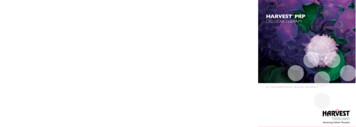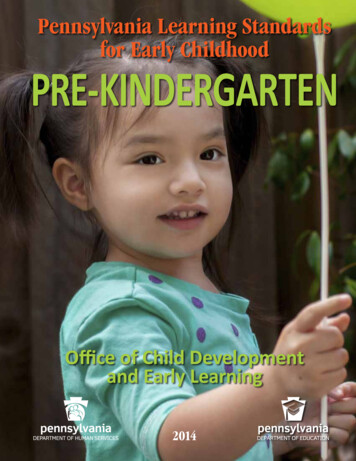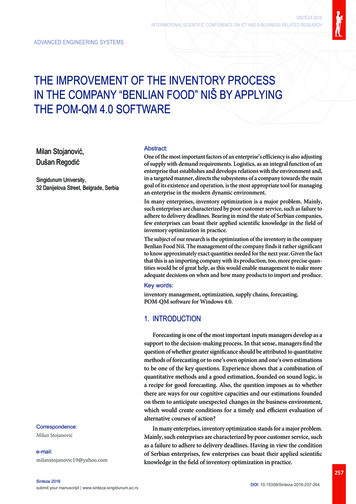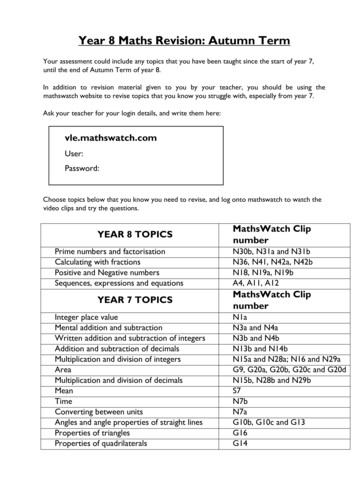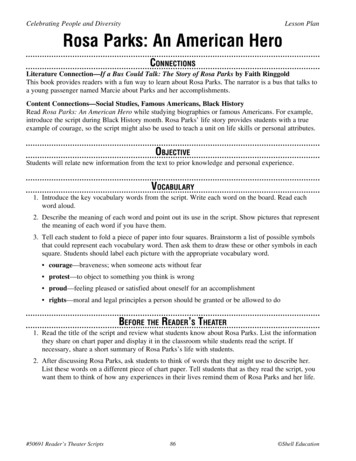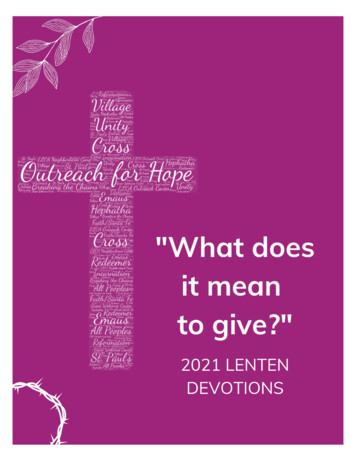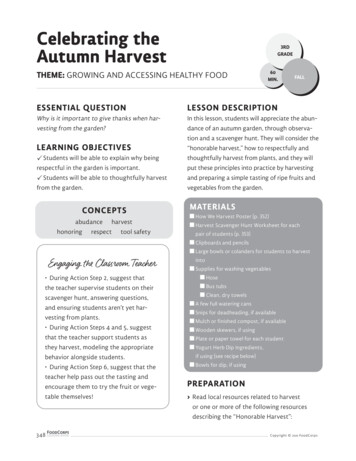
Transcription
Celebrating theAutumn Harvest3RDGRADETHEME: GROWING AND ACCESSING HEALTHY FOOD60MIN.FALLESSENTIAL QUESTIONLESSON DESCRIPTIONWhy is it important to give thanks when harvesting from the garden?In this lesson, students will appreciate the abundance of an autumn garden, through observation and a scavenger hunt. They will consider the“honorable harvest,” how to respectfully andthoughtfully harvest from plants, and they willput these principles into practice by harvestingand preparing a simple tasting of ripe fruits andvegetables from the garden.LEARNING OBJECTIVES Students will be able to explain why beingrespectful in the garden is important. Students will be able to thoughtfully harvestfrom the garden.CONCEPTSabudance harvesthonoring respect tool safetyEngaging the Classroom Teacher During Action Step 2, suggest thatthe teacher supervise students on theirscavenger hunt, answering questions,and ensuring students aren’t yet harvesting from plants. During Action Steps 4 and 5, suggestthat the teacher support students asthey harvest, modeling the appropriatebehavior alongside students. During Action Step 6, suggest that theteacher help pass out the tasting andencourage them to try the fruit or vegetable themselves!348MATERIALSHow We Harvest Poster (p. 352)Harvest Scavenger Hunt Worksheet for eachpair of students (p. 353)Clipboards and pencilsLarge bowls or colanders for students to harvestintoSupplies for washing vegetablesHoseBus tubsClean, dry towelsA few full watering cansSnips for deadheading, if availableMulch or finished compost, if availableWooden skewers, if usingPlate or paper towel for each studentYogurt Herb Dip Ingredients,if using (see recipe below)Bowls for dip, if usingPREPARATION Read local resources related to harvestor one or more of the following resourcesdescribing the “Honorable Harvest”:Copyright 2020 FoodCorps
The chapter, “The Honorable Harvest,”from Robin Kimmerer’s BraidingSweetgrass: Indigenous Wisdom,Scientific Knowledge, and the Teachingsof Plants (2013) The article, “The ‘Honorable Harvest’:Lessons From an Indigenous Tradition ofGiving Thanks” in YES! Magazine online Explore local indigenous and native harvesttraditions by talking with elders, partners,and individuals with local harvest knowledgein the community. If possible, ask local individuals to share these traditions with students. If not, with permission, integrate thosetraditions into your harvest lesson. Familiarize yourself with the local harvesting seasons because these are not the samein every place. Create a large poster of the How We Harvest:Thoughtful Harvesting Practices to sharewith students. Determine what kind of tasting you’ll havebased on what you have to harvest (e.g.,make wraps such as in the lesson Plant PartWraps, pass out wooden skewers for studentsto make their own veggie skewers, or preparethe Yogurt Herb Dip). Determine which beds you’ll harvest fromand how you’ll arrange to have students allharvesting at the same time. Ideally, you’dhave a couple adjacent beds students canharvest from and/or an adult volunteer tohelp students at another bed. Set up a washing station close to a foodgrade hose, where students can wash produce under running water. Set up supplies for students to use to “giveCopyright 2020 FoodCorpsback to plants,” such as a few full wateringcans, some snips for deadheading, somemulch, or some finished compost. Prepare the dip, if using.Yogurt Herb DipYield: 4 cups, 25 servings of 2 tablespoons1 32-ounce container Greek yogurt*(about 4 cups)Handful of finely chopped herbs(such as parsley, dill, mint, and basil)2–4 tablespoons lemonjuice1 teaspoon salt, more totaste¼ teaspoon pepper, more to taste*For dairy-free students, consider dairyfree alternatives such ascoconut, almond,or cashew yogurt.Mix all ingredients together in a bowl.Taste and adjust seasoning, as needed.ACTION STEPS1. Engage: Gather students in a circle and say,The word “abundance” means a lot of oran overflowing amount of something. Havethem repeat the word, perhaps performingan accompanying hand gesture you showthem. Ask, Staying in your spot, turn yourhead looking all around the garden. Wheredo you see abundance? Have students sharetheir observations, and then say, The fall is aspecial time of year when all the hard workpreparing the soil, planting seeds, watering,and weeding comes to fruition—it’s timeto pick and gather all the ripe crops we’vetended all season long. Discuss what “harvest” means and if there is a local word forthis practice. You might even share how,349
in Old English, the word for the seasonbetween summer and winter was called“harvest.” (5 min.)2. Scavenger Hunt: Pass out a clipboard andHarvest Scavenger Hunt Worksheet to eachpair of students. Let students know they’ll belooking for things that are ready to harvest, butthey won’t be harvesting anything yet. You’lldo that together later in the lesson! Remind theclass of expectations in the garden and yourcallback strategy for when it’s time to circle upagain. (10 min.)3. The Honorable Harvest: Call students backto the circle, and ask pairs to share one example of abundance they found in the garden.Invite local elders, partners, and individualswith local harvest knowledge in the community to participate in or lead this circle. Say,Nature is giving us gifts of food to eat and saveup for wintertime—gifts of beautiful flowers tomake us smile and gifts of seeds to collect forplanting next season. We want to honor thesegifts by being respectful and thoughtful withthem. Display the How We Harvest Poster ofthoughtful harvesting practices for studentsto see. Go over each practice, and ask studentswhy that practice is important and what thatmight look like. Share the origin of this tradition and local harvest traditions, if possible.Explain to students that they can verbally askplants for permission, such as saying, “May Iharvest your fruit?” But also explain to students how to test for ripeness. Say, By givinga gentle tug on a fruit, we can see if it’s ripeand ready. If it doesn’t want to come off easily,that’s the plant’s way of saying it’s not readyto be harvested yet. Ask students for ideas ofhow to give thanks and give back to the plant350they’re harvesting from. Ideas might includesaying thank you and breathing some carbondioxide onto the plant, watering it, removingdead growth, applying mulch, top dressingwith fresh compost, or weeding around itsroots. (10 min.)4. Harvesting and Preparing: Bring studentsto the beds they’ll be harvesting from, and tellstudents about the plant or plants they’ll beharvesting. Model the proper technique forharvesting that particular plant, and then allowstudents to harvest. Encourage each studentto ask for permission and to harvest carefully.Have small groups of students take turns washing produce. (10 min.)5. Giving Back to the Plants: Discuss withstudents what these plants need to grow andthrive (sun, nutrients from soil, water, and air),and then give back to the plant in their ownway, such as by sprinkling plants with finishedcompost, weeding around them, speaking tothem, or watering them. (10 min.)6. Tasting: Gather students back together totry the fruit or vegetables you’ve harvested.Invite students to express words of gratitudebefore the tasting. (10 min.)REFLECTIONHave students discuss the following questions in small groups, then share with theclass: (5 min.)Social and emotional learning Ask yourself: How was I respectful towardothers and the plants in the garden today? How do you feel when you treat plants withcare and respect?Copyright 2020 FoodCorps
Check for understandingHow do we know if a plant is ready to beharvested?What examples of abundance in our gardenare most exciting to you?What are ways we can give thanks to theplants that produce so much good food forus?Sometimes abundance isn’t something wecan see or touch. What are other examples ofabundance in your life?ADAPTATIONSMusic: Sing “Dirt Made My Lunch” by the BananaSlug String Band, a song in which you give thanksto soil for helping grow the food you eat.Gifting: If you have a bumper crop (a crop thathas yielded an unusual abundance), considerways of sharing the harvest with other schoolcommunity members, such as setting up a tableoutside the classroom, sharing with parents atpickup, or donating to a local food pantry.ACADEMIC CONNECTIONSEnglish Language Arts Common Core StateStandardsCCSS.ELA-LITERACY.L.3.5.BIdentify real-life connections between wordsand their use (e.g., describe people who arefriendly or helpful ).NOTE: Connect to state social studies standards if possible.Copyright 2020 FoodCorps351
How We Harvest PosterHow We HarvestThoughtful Harvesting Practices Ask permission of the ones whose lives you seek.Abide by the answer. Never take the first. Never take the last. Harvest in a way that minimizes harm. Take only what you need and leave some for others. Use everything that you take. Take only that which is given to you. Share it, as the Earth has shared with you. Be grateful. Reciprocate the gift. Sustain the ones who sustain you,and the Earth will last forever.Excerpted from Robin Kimmerer, “The Honorable Harvest:Lessons From an Indigenous Tradition of Giving Thanks” (2015)352Copyright 2020 FoodCorps
Name:Date:HARVEST SCAVENGER HUNTDIRECTIONS: Find with yourstemsFind:EDIBLE PLANT PARTSeyes examples of ABUNDANCE in our garden.(But don’t harvest anything yet!)Find the plant with:the BIGGEST fruitthe MOST fruita fruit that is ripe and ready!flowerseedsred:orange:that are readyto be harvestedrootsleavesFind a plant forevery color ofthe rainbowyellow:green:blue/purple:353Copyright 2020 FoodCorps
from Robin Kimmerer's Braiding Sweetgrass: Indigenous Wisdom, Scientific Knowledge, and the Teachings of Plants (2013) The article, "The 'Honorable Harvest': Lessons From an Indigenous Tradition of Giving Thanks" in YES! Magazine online Explore local indigenous and native harvest traditions by talking with elders, partners,

